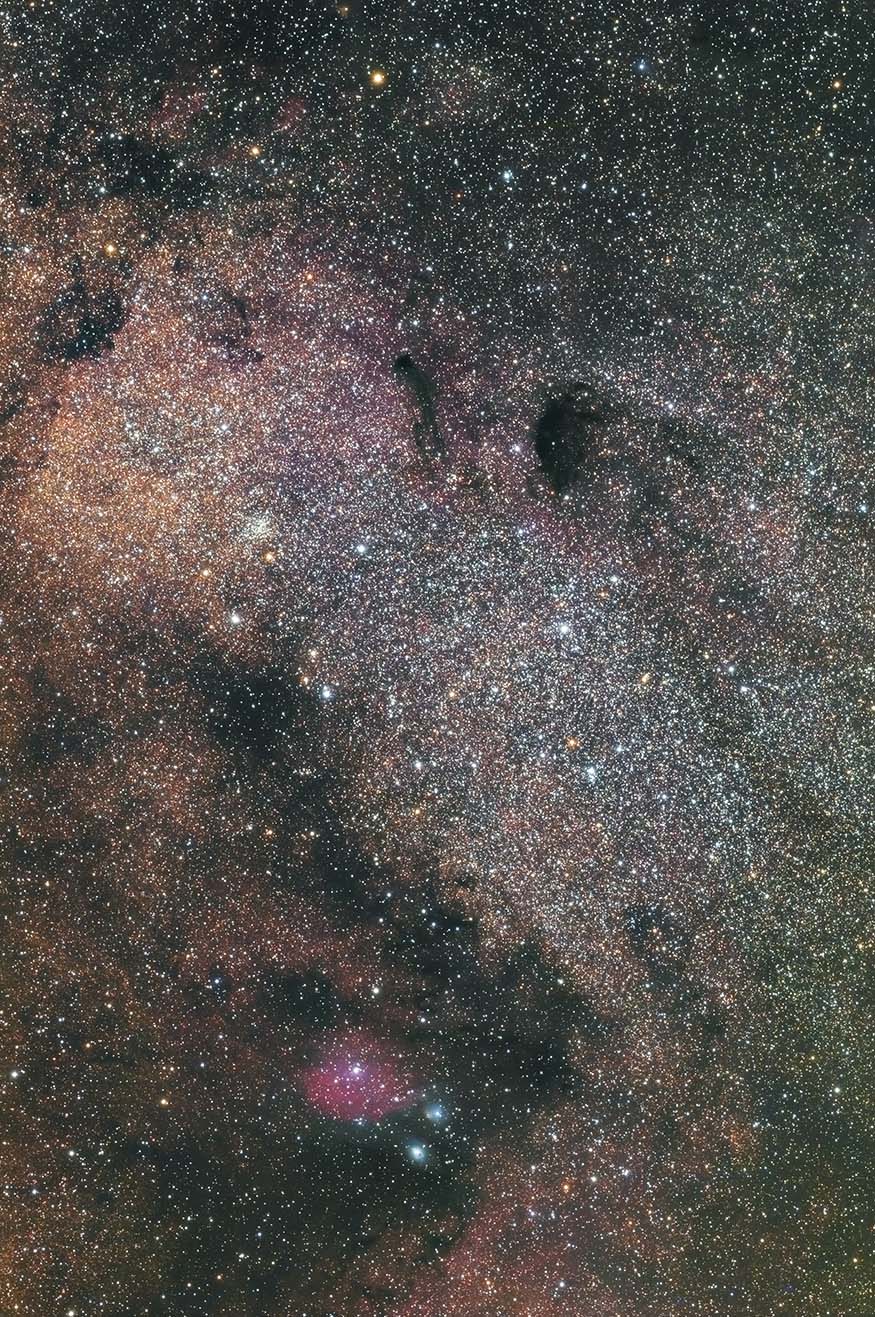
BEAUTY: 
BRAGGING RIGHTS: A beautiful sight
HOW EASY IS IT TO SEE? Best with binoculars or small telescope
best time to see it: Summer (in Sagittarius)
TYPE: Star Cloud
DISCOVERED: 1764 by Charles Messier
When you look at the teapot of Sagittarius you’re looking toward the core of the Milky Way. Unfortunately, there are vast clouds of dust between us and the core, so we don’t actually see very much.
M24 appears at first to be a rectangular patch of light in front of dark clouds. But appearances are deceiving in space—it’s actually a hole in the dust clouds through which we can see deeper into the Milky Way. M24 is like a window that lets us see halfway to the center of the galaxy.
Messier 24’s stars are so far away that they look flat—as if they were dots of glowing paint on the inside of a vast dome. But with a little imagination, you can look at M24 and see billowing dark clouds momentarily parting to reveal a field of stars beyond.
NGC 6603: Near the southern edge of M24, you might see a tight concentration of stars, almost like a globular cluster. This is actually the open cluster NGC 6603, but it is so far away—more than 12,000 light-years—that it appears very small. See if you can spot it.
Follow the teapot. M24 is easy to find. The triangular top of the teapot points straight up at it. Wait for dark skies and a clear view of the southern horizon. If you’re lucky you should be able to see it with the naked eye. Binoculars give you a wide-angle view of the whole cloud and its surroundings. But a small telescope can help you focus on the details.
A city of stars. With a small telescope you should be able to resolve the patch of light into countless stars. You’re looking at another galactic arm of the Milky Way, more than 10,000 light-years away.
Dark clouds. The edges of M24 are riven with dark clouds and tendrils. There’s a particularly dark pool of dust at the top center of M24. This is known as Barnard 92 and it features a lonely bright star near its center. Try to spot it.
SAGITTARIUS REGION IN SUMMER; 30-DEGREE FIELD OF VIEW